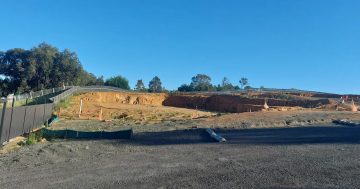
Wayne Harriden from Independent dispels the misconceptions around HomeBuilder. Photo: Supplied.
When Prime Minister Scott Morrison announced the $25,000 HomeBuilder grant, he said that it would ‘keep the dream alive’ for people wanting to build a home. But whose dream?
Executive director of project marketing for Independent Wayne Harriden says there’s a lot of confusion about who can get the grant.
“We’re finding that a lot of people who come and look at one of our off-plan developments have no idea that they could be eligible. These are often people who already own a place and are upgrading to somewhere nicer or downsizing. We ask them if they’ve realised that they could be eligible for the grant and they’re just stunned. They had no idea because there’s never been a grant for existing owners before,” Mr Harriden said.
The HomeBuilder grant is a federal initiative but is administered by state and territory governments. It offers a $25,000 grant to eligible owner-occupiers who build a new home or substantially renovate an existing one. The scheme is subject to caps on property price and income, with the grant being available for singles earning $125,000 or under and couples earning $200,000 or under.
Since the grant was announced in June there has been a surge in interest for off-plan and other new builds. The Australian Bureau of Statistics has reported a strong 12.9 per cent rise in new building approvals for residential property.
“The market is quite buoyant. We’re seeing a big uptick in enquiries. The grant is bringing people into the market who were going to wait to buy but have decided to go ahead so that they can take advantage of the extra money,” Mr Harriden said.
Understanding which projects are eligible is the next piece of the puzzle.
To get the grant, homeowners must have signed a contract between 4 June and 31 December 2020. Work on the project must commence within three months of signing the contract, so the latest it can possibly start is 31 March 2021. Construction must also be complete before 31 October 2022.
“There’s been a lot of misunderstanding about what that means for buyers.
“If you’d already signed a contract and put your deposit down before 4 June, you aren’t going to get the grant even if the actual construction work hadn’t started yet.”
But according to Mr Harriden, the real trap is at the other end.
“You want to know that your development is going to be completed by the deadline, otherwise you might not end up getting the money. If you’re banking on it to pay down your mortgage or buy furniture for your new home, that’s going to be quite a blow.”
To avoid disappointment, he suggests looking at developments that aren’t relying on pre-sales for funding.
“It’s common practice for developers to fund their projects through pre-construction sales. Many have a target to hit before building can begin, which might be as high as 60 per cent of the units. If those developers don’t hit their target, they can’t start construction and the project won’t be completed by the October 2022 deadline.”
To avoid heartache, Mr Harriden and his team have identified developments that don’t rely on pre-sales.
“Right now, we have five developments that are fully funded: Oaks in Phillip and Kiara in Narrabundah are both eligible for the HomeBuilder grant along with DKSN 2.0 in Dickson, Otto in Denman Prospect and Merakai in Taylor – as long as your income falls under the threshold. They’re great developments, and were very popular even before the grant came into play.”
You can see more information about eligible developments and how to apply for the HomeBuilder grant at Independent.
This is a sponsored article, though all opinions are the author’s own. For more information on paid content, see our sponsored content policy.





















